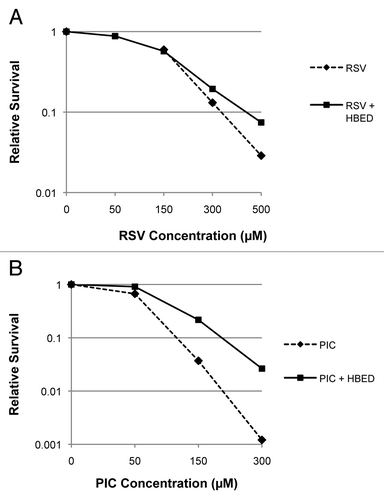Figures & data
Figure 1. IR clonogenic survival in 1522 fibroblasts. Fifty micrometers of RSV (A) or PIC (B) was added 24 h prior to IR exposure. (DMF for RSV was 0.71 ± 0.05 at 10% survival. PIC did not produce a significant DMF.
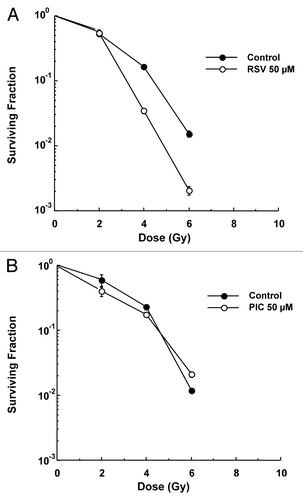
Figure 2. Antioxidant measurements of RSV and RSV metabolites. The reaction between xanthine oxidase and hypxanthine creates superoxide that converts DMPO to DMPO-OH. Antioxidants scavenge superoxide, thus decreasing the amount of DMPO-OH generated. Only RSV and PIC produced a significant amount of antioxidant activity, with PIC being 24-fold more efficient (PICslope/RSVslope).
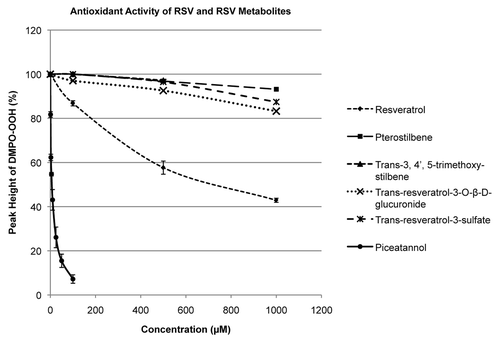
Figure 3. Hydrogen peroxide clonogenic survival of 1522 fibroblasts: (A) RSV (50 µM) was added to 1522 cells 1 or 24 h prior to H2O2 treatment. Enhanced cytotoxicity was seen at both time points (DMF = 0.64 ± 0.08 and 0.52 ± 0.07 at 10% survival, respectively). (B) PIC (50 and 150 µM) was added 1 h prior to H2O2 exposure. Both drug concentrations exhibited significant protection (DMF = 6.6 ± 0.01-and 4.6 ± 0.39 at 50% survival). (C) PIC (50 and 150 µM) was added 24 h prior to H2O2 exposure. Protection was seen for the 50 µM concentration (DMF = 1.2 ± 0.12 at 10% survival); however, enhancement of the peroxide cytotoxicity occurred using the 150 µM concentration (DMF = 0.65 ± 0.10 at 10% survival). (D) TBH clonogenic survival of 1522 fibroblasts. RSV or PIC (50 µM) was added to cells 1 h prior to a 1 h exposure to TBH. RSV enhanced TBH cytotoxicity whereas PIC provided protection (DMF = 0.42 ± 0.05 and 1.7 ± 0.02, respectively).
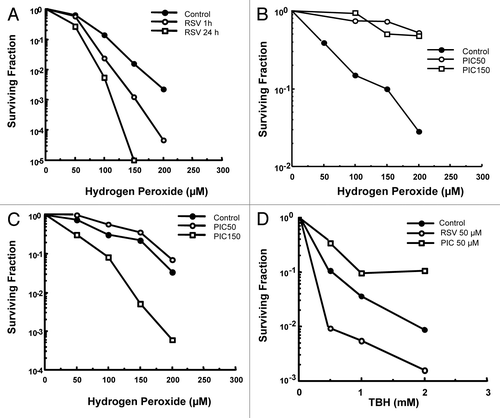
Figure 4. Phenoxyl radical production. (A) Diagram illustrating the reaction used to measure phenoxyl radicals produced from RSV and PIC to oxidize Tempol-H to Tempol. (B) Both RSV and PIC produced a significant amount of phenoxyl radicals due to the increase in of Tempol produced over the course of 12 min. Quinone production. Phenoxyl radicals produced by RSV (C) or PIC (D) generate quinones as shown by a shift in UV abs when HRP and H2O2 were added.
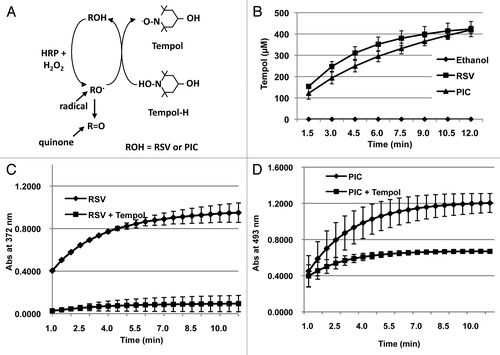
Figure 5. RSV and PIC cytotoxicity clonogenic survival in 1522 cells with HBED. (A) The effect of HBED (100 µM) on the cytotoxic effects of RSV exposure for 24 h in 1522 cells. (B) The survival curve showing similar experiments with PIC. HBED showed protective effects against RSV and PIC exposure suggesting that the oxidative damage associated with prolonged exposure with these agents is mediated at least in part to be mediated by redox-active transition metal complexes. (DMF for RSV = 1.4 ± 0.5 and PIC = 2.3 ± 0.55 at 10% survival).
